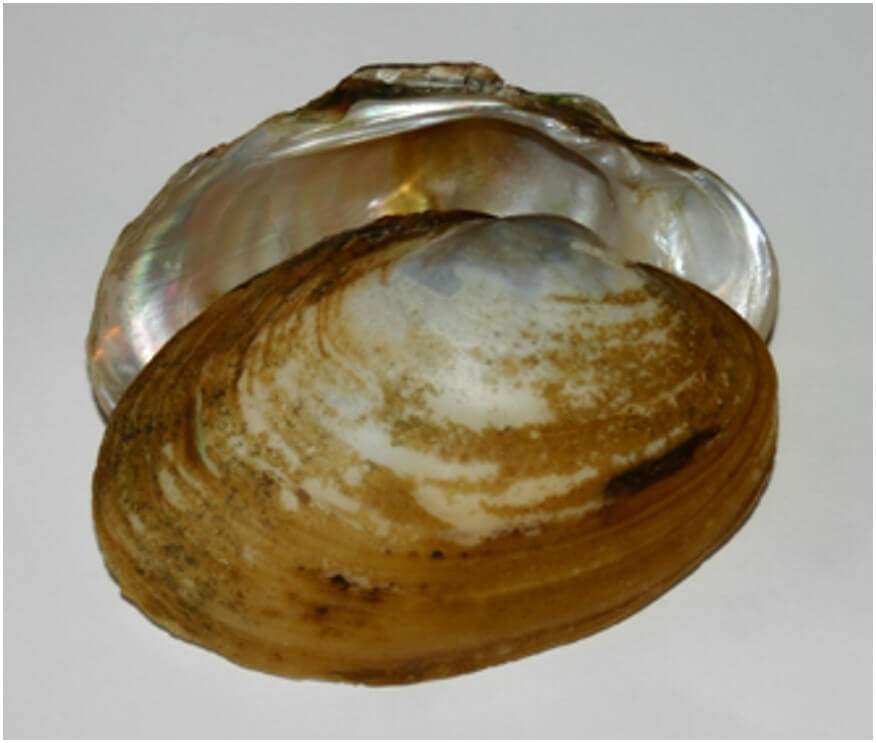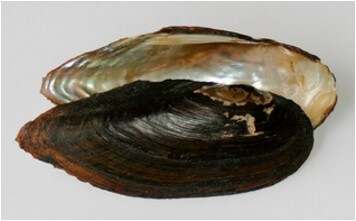New Jersey is home to 12 native species of Freshwater Mussels. Freshwater mussels are important parts of our aquatic ecosystems and a good gauge of stream and river health. They feed on nutrients that they filter while buried in the bottom of the stream. Many species have very specific habitat and larval host fish requirements and require high water quality for their survival. Larval mussels, called glochidia, require a fish host’s gills to harmlessly attach to in order to filter water and grow and be transported to a new home. Once they mature, they drop off the fish into their new home and they begin to grow into adult mussels.


Although freshwater mussels are most diverse in North America, where there are 281 species and 16 subspecies, they are among the most rapidly declining animal groups on the continent. The Nature Conservancy recognizes 55% of North America’s mussel species as extinct or imperiled compared to only 7% of the continent’s mammal and bird species. In North America above Mexico, there are 19 taxa presumed extinct, 44 species listed or proposed as federally endangered, and 60 species that may be endangered. In addition, a number of the endangered species are functionally extinct, with individuals of a species surviving but not reproducing. Freshwater mussel extinctions and declines can be attributed to several factors, including habitat degradation, construction of dams and subsequent loss of host fishes, and expansion of exotic mollusks such as the zebra mussel and Asian clam.


Freshwater mussels, or pearly mussels as they are sometimes called, are among the oldest living organisms on Earth. Individuals are thought to reach ages in excess of a century. As vital ecosystem components, they are food sources for wildlife such as raccoons and muskrats. Young mussels are eaten by ducks, herons and fishes. Often referred to as nature’s vacuum cleaners, they improve water quality by straining particles and pollutants from rivers. In addition, since mussels have a low tolerance for water-borne pollutants, they are excellent indicators of water quality.


Many of our freshwater mussel species have suffered significant declines due to loss of habitat from dams and channelization of our waterways and changes to water quality and natural hydrology. They are very sensitive to changes in stream flow, water temperature, siltation, and any other alterations of their aquatic ecosystems.


Recognizing national and regional declines, as well as impending threats such as zebra mussel infestation, Endangered and Nongame Species Program biologists have been searching the state’s waterways for freshwater mussels. Since 1993, Program biologists have been conducting freshwater mussel surveys for rare species by targeting historic locations, suitable habitats and areas with host fishes present. Viewing scopes and sometimes snorkeling gear are used by staff and volunteers to search for mussels in our state’s streams, rivers and ponds. In addition to wading in water, we inspect shorelines for shells and relicts (very old shells) at all survey sites. Locating populations, however, is only the first step to protecting these inconspicuous, yet vitally important mollusks.


As part of the Landscape Project, critical areas for freshwater mussels are now being mapped using criteria designed specifically for aquatic species. We will develop protection strategies for endangered and threatened species by working with local municipalities, landowners, other state and federal agencies, planners, and organizations such as water watch and conservation groups. In addition, plans are underway to produce an atlas of New Jersey’s freshwater mussels which will include life history narratives, color plates of shells, location maps, and information on national and state range, status, shell description and host fishes for each of the state’s twelve species.


Endangered
Dwarf Wedgemussel – Alasmidonta heterodon (Federally Endangered)
Brook Floater – Alasmidonta varicosa
Green Floater – Lasmigona subviridis
Threatened
Eastern Lampmussel – Lampsilis radiata
Eastern Pondmussel – Ligumia nasuta
Tidewater Mucket – Leptodea ochracea
Triangle Floater – Alasmidonta undulata
Yellow Lampmussel – Lampsilis cariosa
Special Concern
Creeper – Strophitus undulatus
Not Listed Common Species
Alewife Floater – Utterbackiana implicata
Eastern Elliptio – Elliptio complanata
Eastern Floater – Pyganodon cataracta
Historic/Extirpated
Eastern Pearlshell – Margaritifera margaritifera
Introduced Native
Lilliput – Toxolasma parvum
Introduced and Invasive Species
Chinese Pondmussel
Asiatic Clam
Wedge Rangia
More Information
Field Guide to Freshwater Mussels
Freshwater Mussel Status Report (pdf, 544kb)
Mussel Survey Protocol (pdf,1.38mb)
 Official Site of The State of New Jersey
Official Site of The State of New Jersey
